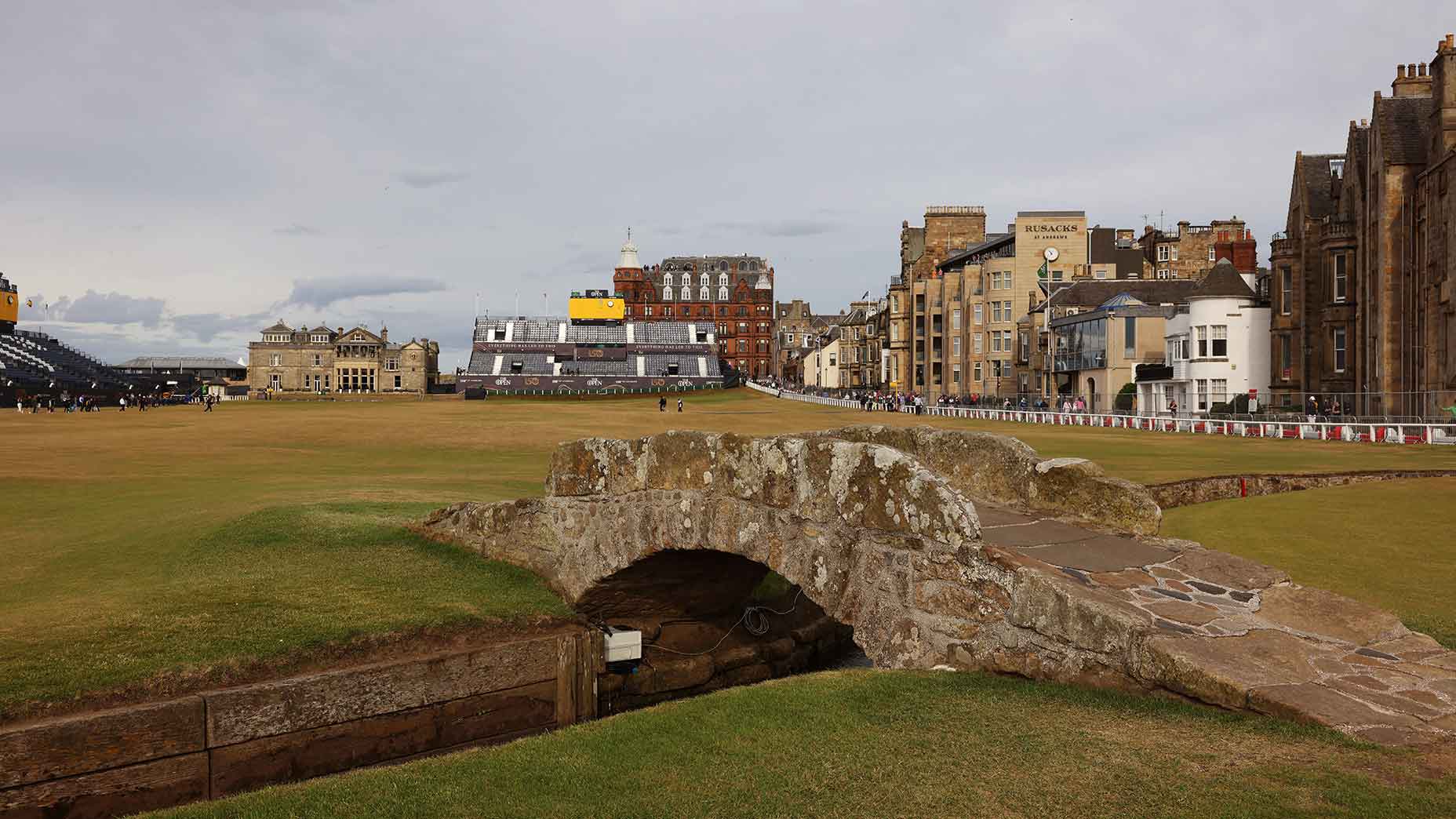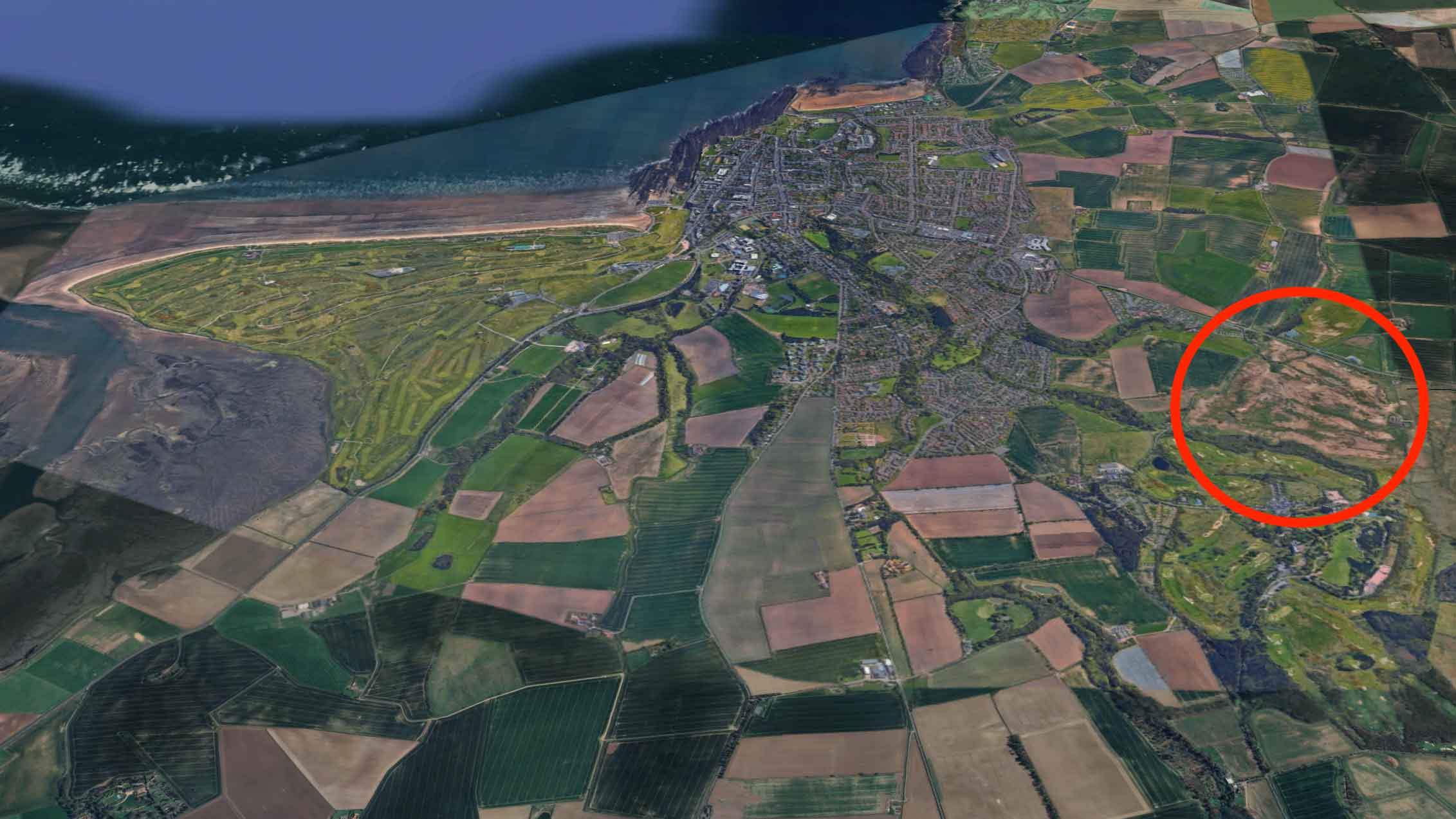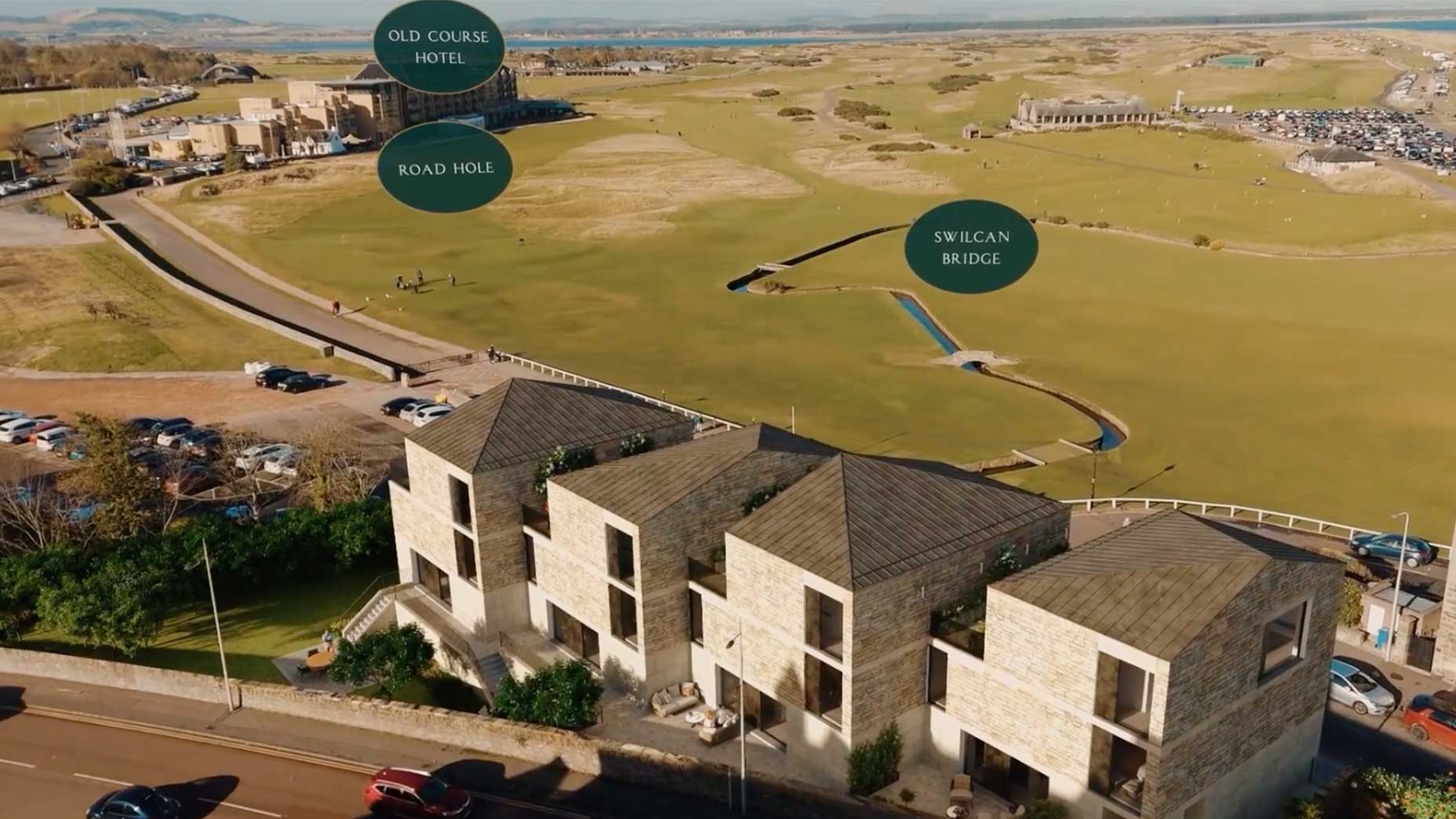It is strange being unfamiliar with something so familiar.
I had played the Old Course around 100 times, but on this gray and blustery morning, I was seeing it as I never had before. Standing on the first tee, I aimed far left of my usual target, across the 18th fairway and toward Links Road: an opening shot that put me on uncomfortable footing. A scrawny strand of gorse between the Swilcan Bridge and the flag on the first green would be my line, but even if I threaded it with my drive, I would still face an awkward angle to the famous Road Hole green.
Until around 1870, when Old Tom Morris separated the first and 17th greens, the Old Course was played in a clockwise direction, over shared corridors. For much of the following century, the course was frequently played in both directions. But over time the clockwise routing fell out of the mix and counterclockwise became the standard — the routing most golfers know and love today.
In St. Andrews, though, the past is always present. And for a brief window this spring, the St. Andrews Links Trust turned back the clock and opened “The Reverse” for general play. As usual for the Old Course, tee times were hard to come by. Unsuccessful in the ballot, I lucked out by landing a spot in a media contingent. A golf-course architect by trade, I wound up filling out a foursome with members of the press.
In its reverse configuration, the Old Course plays from the 1st tee to the 17th green, then down the 17th fairway to the 16th green, and so on until the final hole, which is played from the second tee to the 18th green. Sounds simple enough. But there’s much to consider.
As I pondered the experience prior to my round, the question that intrigued me most was how the 17th would function in reverse. It turns out the drive is much less daunting, with the road and the hotel function room (formerly railway sheds) no longer on the right, in slicer’s territory. That trouble is now on the left, and tacking around it off the tee is fairly straightforward. More complicated is finding a green that hides beyond broken rumples and nestled pot bunkers. Only when you reach the 3rd tee (that is, playing down the 16th fairway to the 15th green) do you feel like a full expanse of linksland is stretching out before you. From here, the Old Course opens up, just as it does in the conventional routing, albeit with strategy turned on its head.
Though the features of the course remain structurally the same, their influence weighs differently. Take the Cartgate bunker. An iconic scorecard-wrecker on the 3rd hole of the conventional routing, it cuts a less imposing presence in reverse, offset as it is behind the green. “Miss Granger’s Bosom,” prominent mounds on the 15th that can blind the approach after a leaked drive, must be carried in reverse on the shortest route to the green.
Such turnabouts inspire a sense adventure. I felt it as I navigated the 14th hole, where the Beardies, four bedeviling pot bunkers, serve as peripheral hazards in the conventional routing — especially in this era of modern equipment — for golfers who steer away from the out-of-bounds wall on the right. In reverse, the Beardies sit in the direct line of play. Beyond them is a heather and marram-clad hollow short of the 5th green, which means you either have to thread a layup between the bunkers, or play well right to the 5th fairway.
In years past, I had spent many a shadowy summer evening looking back down the 12th hole at the most obvious evidence of the Old Course’s reversibility: the Admiral bunker. For once, it was oriented in the “correct” direction, with its steep sod wall facing the tee. The same applies to a handful of other bunkers, a twist that adds a layer of complexity to a “backward” round.

Negotiating “The Loop,” a crisscrossing stretch of holes from 7 to 12, is fraught with traffic issues at the best of times, and more so in reverse. From the 12th tee, you jump back across the 11th green to the 10th, which brings a wonderfully textured bank and pot bunker to the fore. Crossing the 9th and 10th adds interest to the quietist section of the links. And while there might not be a better par-3 in golf than the shared-green 11th, it is also compelling in reverse. Now, you are playing to the 7th-hole portion of the green, and though the angle is no more than 45 degrees different, the combined putting surface is 115 yards wide, the feeling is alien. In short, the loops gets your attention. Its interwoven routing also keeps on your toes.
Exiting it is especially unnerving. It is here that even the most adventurous golfer might question the sanity of it all. Striking blindly over two double greens toward the narrow start of the 7th fairway is not for the faint-hearted. It’s like being a pedestrian abroad, unsettled by cars on the wrong side of the road. But that would be what the marshals are for. Three were on hand to help shepherd golfers through.
Despite the comfort of the town’s skyline, a mixture of discomfort and unknowing rears a few more times on the way home, as broken ground or gorse confounds the direct line on drive and approach. The elegantly rippling 4th green, perpetually tricky, is an even greater challenge when it falls away in reverse. By contrast, the funky rear-right pocket of the 3rd green makes a welcoming target. As for the 1st green, it is usually forgiving of long misses. But not when it plays as the penultimate green. With rough now fronting the green, approaches must be flown in, and indelicate shots run the risk of releasing into the water
Back in town, where buildings flank the 1st and 18 fairways, it doesn’t feel so strange to cross back over one more time. The 1st and the 18th are not the only fairways that are usually shared. The largely continuous playing space means that much of the reverse routing feels familiar; if you have played the Old Course, you have trod this ground before, which makes it wonderfully disorienting to be presented with new angles of play.
My preference? The conventional journey brings about a greater number of truly world-class holes. I understand why it became the standard. But I also find it thrilling to see things get switched up, which, word has it, the Links Trust might continue doing for brief off-season periods in the years ahead. I can only hope so. My favorite golf courses take you on a journey over a landscape. One of the many pleasures of the Old Course is that the journey doesn’t merely work in one direction. It’s exhilarating either way you go.








